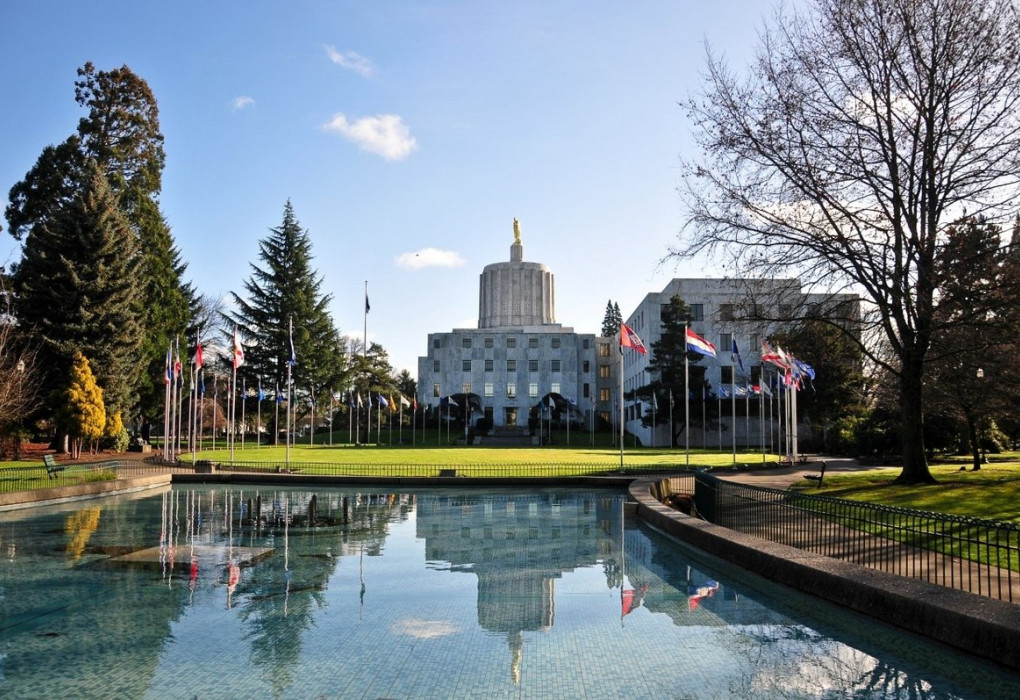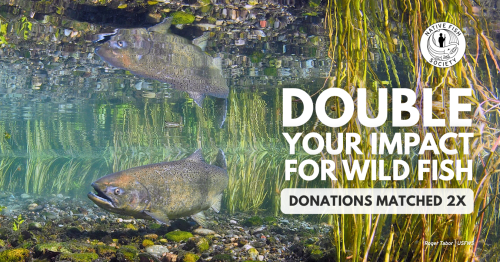Native Fish Society Comment to Oregon Ways & Means Committee
February 20, 2019
FR: Native Fish Society
TO: Ways & Means Committee
RE: Comments on the Oregon Governor’s Budget
NFS Supports the Following POPs
POP 100 - “Protecting Oregon’s Forests and Communities” is our top funding priority for the Oregon Department of Forestry’s budget requests. Oregon’s state and private forests require additional monitoring and oversight to ensure conservation goals for imperiled species, like threatened coho salmon, are met. In the absence of such investments, the Native Fish Society and our partners have challenged ODF in the courts on harmful forestry and road building practices that directly contribute to the degradation of community drinking water, watershed health, and native fish species.
POP 104 - This program has been helpful to identify, design, and fix high priority fish passage barriers, such as the North Creek culvert, that has blocked 13 miles of high-quality habitat on the central Oregon Coast for the last 62 years. ODFW staff is instrumental in permitting and providing expertise on structure designs to ensure statewide fish passage requirements are being met or exceeded.
POP 109, 126 - Klamath Reintroduction Planning and Reintroduction Research, Monitoring, and Evaluation. These investments are essential for realizing the benefits to native fish and watershed health from the removal of the four lower Klamath Dams in 2021. ODFW must put together a plan for reintroducing culturally and ecologically significant species of salmon and steelhead to their historic habitats with the goal of supporting native, self sustaining populations. Realizing this vision will require careful planning, research, monitoring, and evaluation.
POP 114 - Relating to the Oregon Conservation Strategy. Investing in Conservation Biologists to identify and assist with conservation planning and implementation is a critical part of ODFW achieving its mission to “protect and enhance Oregon's fish and wildlife and their habitats for use and enjoyment by present and future generations.” One example of where this funding would benefit Oregonians is in the development of a Multi-Species Conservation and Management Plan for Southwest Oregon, including steelhead. Currently, no such plan in this region exists for steelhead, and as a result, local stakeholders are concerned that these iconic wild steelhead are being overfished without the proper guidelines to prevent their decline. In September of 2018, the ODFW Commission directed department staff to develop a conservation plan for these species, a project that requires critical staff capacity and funding to complete. A proactive approach to the conservation of native fish species saves taxpayer dollars by avoiding costly and uncertain recovery measures when species are already imperiled. These proactive investments also maintain fishing opportunities over the long term, which help drive rural economies. For example, during the winter months, the coastal steelhead fishery provides important tourism dollars critical to hotels, restaurants, and local businesses outside the typical summer beach tourism season.
Special Public Works Fund - Wallowa Dam - Support with volitional fish passage
Historically, Oregon was home to only two native sockeye salmon runs, one in Suttle Lake in the Deschutes watershed and the other in the northeast corner of the state in Wallowa Lake. In 1919 the construction of Wallowa Dam ended the prolific native sockeye salmon run by blocking access to their historic spawning grounds. As a result, the sockeye salmon run, and the enrichment these fish brought to the local environment and communities was lost. Today, this sockeye salmon run is considered extinct. With renewed investment, this doesn’t have to be the end of the story for Wallowa sockeye, as well as threatened spring chinook and bull trout found in the Wallowa River.
The shared vision of Native Fish Society and the co-managers, ODFW and the Nez Perce Indians, is to restore volitional fish passage at Wallowa Dam, which would allow sockeye salmon, threatened spring chinook and bull trout to once again access the lake and its habitats upstream. When public dollars are invested, we believe they must benefit Oregonians writ large. Reviving abundant wild, native fish to the Wallowa River and its lake would constitute such a wide ranging public benefit. Volitional fish passage would increase the health of the entire Wallowa system by allowing all of the native fish species to pass Wallowa Dam at their own timing, under their own power, and without the added cost and effort of regularly trapping and trucking these species. Through the proposed investment, Governor Brown has identified a historic opportunity with the potential to benefit the local community, its native fish, and the environment. We support this funding as a step toward this greater shared vision and hope some of these concepts, including volitional fish passage can be included in the final language governing the use and intent of these public funds.
NFS Hatchery Comments & Recommendations
Hatchery management comprises a full 38% of ODFW’s Inland Fisheries budget. This is in stark comparison to the 29% of Inland Fisheries budget that is apportioned to Native Fish Conservation. The numerous ecological and social impacts of hatcheries in Oregon are compounded by the infrastructural challenges facing these aging facilities. A 2005 state facilities assessment for ODFW indicated that the state had a $94+ million backlog in deferred maintenance for these facilities. The multiplicity of problems arising from Oregon’s hatchery programs indicate the need for the state to prioritize and downsize hatchery infrastructure. The worst offenders—those having direct, negative impacts on Endangered Species Act listed fish and those that degrade water quality—should be decommissioned or rehabilitated to serve a different fish and wildlife purpose. Rather than continuing to throw emergency funding at individual hatcheries on a case by case basis as urgent problems arise, the state and the people of Oregon will be better served by a process that evaluates where limited funds can have the greatest benefit for all Oregonians and our native fish species.
In this biennium, two problematic hatchery programs provide the state the opportunity to begin to right size its hatchery infrastructure and investments. These programs include Leaburg Hatchery and the North Santiam summer steelhead hatchery program. These hatchery programs were once funded by the federal government to serve as “mitigation” for federal dams in the Willamette basin. The U.S. Army Corps of Engineers (USACE) has transferred production from Leaburg Hatchery to another facility (thereby continuing to provide “mitigation”) and has suspended the summer steelhead program in the North Santiam due to biological impacts to ESA listed native fish and legal challenges to the program. Beyond the ecological and legal liability imposed by continued operations at Leaburg, the aging hatchery facility requires extensive repairs and renovation to meet current safety and operational standards. For these reasons, Native Fish Society recommends that the state does not fund ODFW POP 115 or any request regarding the North Santiam summer steelhead hatchery program. We encourage the state to take a comprehensive look at its hatchery programs and infrastructure in order to prioritize ongoing deferred maintenance needs and right size the program to better serve Oregonians and our fisheries.


